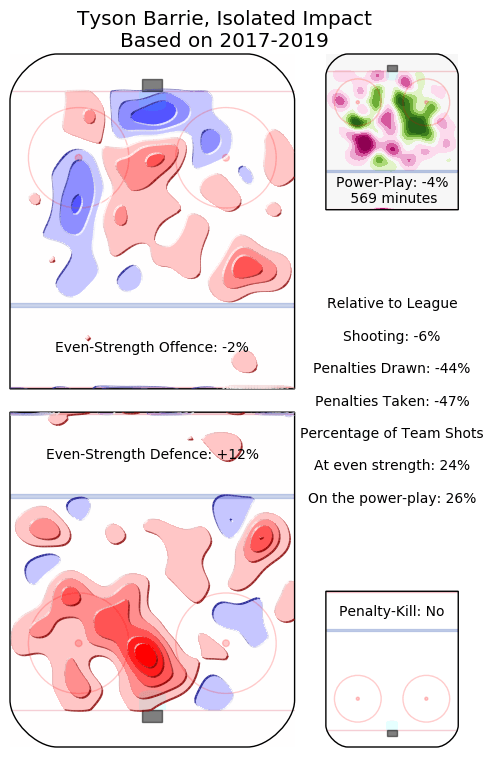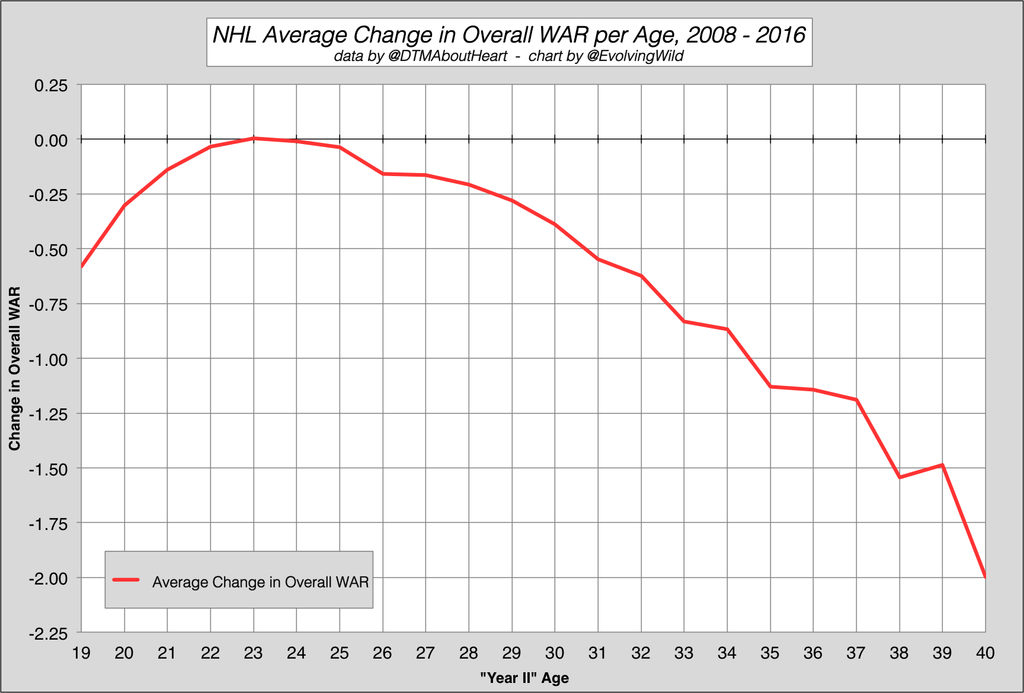© 2025 ALLCITY Network Inc.
All rights reserved.

This hypothetical is sounding more like a reality every minute with rumors flying regarding his destination. Tyson Barrie is coming off his best National Hockey League season in which he notched 14 goals and 45 assists, combining for a career-high 59 points. He was the seventh-highest point-producing defenseman in the league, he set the franchise record for most all-time goals by a defenseman, and he was instrumental in Colorado’s late push into the Stanley Cup Playoffs.
So why are Joe Sakic and crew considering getting rid of him?
In recent years, the Avalanche player most commonly mentioned in trade rumors has been Barrie—for a variety of reasons. Perhaps Colorado’s executives can’t bear to watch him give away the puck in the defensive zone any longer, or maybe they are fully onboard the Cale Makar bandwagon and simply don’t see a need for Barrie anymore.
Barrie’s elite playmaking skills are obvious. So are his costly defensive mistakes. However, it may come as a surprise that Barrie is one of Colorado’s most effective D-men at stopping opponents from entering the Avalanche zone. He excels at breaking up opposing rushes, collecting the puck, and leading breakouts.
Barrie ranks highest on the Avs defensive corps in Break-up Percent with 8.33% of entries stopped (next highest is Patrik Nemeth with 6.67%), while he ranks second in Possession Exit Percent with 41% of breakouts on his tape (league average is 31.11%), according to Figure 1 below. Barrie’s break-up success is likely caused by his reliance on his stick more than his body defensively, which is more useful when breaking up an opposing rush at the blue line. Conversely, a big-bodied player like Nikita Zadorov is better at checking players off the puck deep in the Avalanche zone.
Figure 1: Controlling the blue line. Chart created by Sean Tierney, who can be found @ChartingHockey and on Tableau Public. Data by Corey Sznajder. https://public.tableau.com/profile/sean.tierney#!/vizhome/ControllingthebluelinepoweredbyCoreySznajderShutdownLine/Dashboard1.
The numbers suggest Barrie is great at taking the puck away defensively, but the narrative surrounding his offensive turnovers may be overhyped. Barrie ranked in the middle of the Avalanche defensemen this season in Takeaway/Giveaway rate (total takeaways divided by total giveaways), trailing the team average (0.9) and Erik Johnson (0.8) while matching Nikita Zadorov (0.7).
So why is Barrie’s defensive game often highly criticized? First, big hits are obvious and effective positioning isn’t. Considering Barrie’s size and style, it’s not surprising that his defensive play goes unnoticed. Accordingly, his hits plus blocked shots metric is the lowest among the top six Avs defensemen (Figure 2).

However, Barrie’s offensive excellence often coaxes NHL GM’s into selectively ignoring his defensive struggles, and for good reason. After all, Barrie was the highest-scoring defenseman on the Avalanche by a whopping 23 points last year. His 294 points since the 2013-14 season match those of P.K. Subban for eighth among all active NHL defensemen in that time.
Maybe keeping that kind of offensive production in the company of two budding young defensive prospects isn’t such a bad idea. At least Joe Sakic seems to think so.
“[Barrie] was a driving force down our stretch,” Sakic said in his post-season press conference. “With what we saw with him, Cale [Makar], and [Sam] Girard, I would be very, very comfortable starting the year with that group. I think that they can do a lot of special things together.”
Perhaps Sakic was inspired to clone San Jose’s defensive powerhouse after seeing the trio of Brent Burns, Erik Karlsson, and Marc-Edouard Vlasic up close during the Western Conference Semifinals.
But Barrie’s presence doesn’t only aid his defensive partners. His impact on the production of Colorado’s top guys is unmatched by any other Avs player. Barrie drastically improves the goals scored by the first line while he is on the ice, and supports the production of high-danger scoring chances per Table 1 below. Barrie’s offensive help and potentially irreplaceable chemistry with the top Avalanche forwards may force Sakic’s hand in extending his contract.
|
Player |
Gabriel Landeskog |
Mikko Rantanen |
Nathan MacKinnon |
|
GF% With |
58.33 |
62.5 |
54.55 |
|
GF% Without Barrie |
28.57 |
50 |
33.33 |
|
xGF% With |
56.6 |
59.55 |
56.06 |
|
xGF% Without Barrie |
58.14 |
51.78 |
51.98 |
|
High Danger Scoring Chance% With Barrie |
58.46 |
62.96 |
57.75 |
|
High Danger Scoring Chance% Without Barrie |
55.26 |
45.24 |
47.73 |
Table 1: Data courtesy of Natural Stat Trick. GF% represents the percentage of total goals while a given player is on the ice that are scored for that player’s team. xGF% represents the percentage of total expected goals while a given player is on the ice that are scored for that player’s team.
If the Avalanche decides to sign Barrie to an extension, it would cost them some serious cap space. Barrie will likely be asking in the $7-8 million average annual value (AAV) range for a long-term deal, referencing comparable contracts like Victor Hedman’s $7.875 million AAV, Kris Letang’s $7.25 million, and John Carlson’s $8 million, each spanning eight years.
However, an eight-year extension — like those given to the defensemen named above — would put the nearly 28-year-old Barrie under contract with the Avalanche until he’s just under 36. Yikes.
According to Hockey-Graphs.com, most NHL players begin to decline in production after age 25 and begin to see the most significant drop-offs in play after age 30. The graph below shows the average change in Wins Above Replacement (WAR) for NHL regulars according to their age.

Along with Tyson Barrie’s age, Avalanche executives must also consider the context of the Avalanche as a team. Last season, Colorado’s highly touted prospects began to show that they haven’t fully grown into their NHL roles. As a result, Colorado’s secondary scoring options struggled to find the back of the net this year (forwards not named MacKinnon, Rantanen, or Landeskog only accounted for 46% of total team goals).
On the other hand, Colorado’s defense has dramatically improved in recent years with the additions of Nikita Zadorov, Sam Girard, Ian Cole, prospects Nicholas Meloche and Connor Timmins, and of course, fourth overall draft pick Cale Makar. The NCAA Frozen Four finalist and Hobey Baker Award winner’s surge onto the NHL scene began with a goal in Game 5 in the first round of the Stanley Cup Playoffs, which just so happened to be his first professional game. His goal and five assists nearly matched Barrie’s eight playoff points and left Avs fans wondering whether Tyson Barrie might really be expendable.
Last season, the Colorado Avalanche glimpsed their future with one of the best top lines in the NHL and a solid defensive group featuring hopeful young talent. Their performance in the playoffs proved that their Stanley Cup window has cracked open. Now the Avs need to decide if either Tyson Barrie or Cale Makar is going to be the deciding factor in whether it remains cracked or the shutters are blown clean off.
Luke’s Take
Barrie’s play this season allows the Avs to make a choice that any NHL team would envy: maintain an extraordinarily talented defense or trade for a top-six forward. They can keep an elite NHL defenseman to pair with young talent, or maximize his trade value and still maintain that young talent. Betting on a young, unproven player will always be a risky option, but Makar has shown the potential of a top pairing defenseman capable of replacing Tyson Barrie, and even maybe outshining him. Similarly, Girard’s potential is beginning to show after a season in which he logged 23 assists. His offensive production has mirrored that of Barrie in his early career, but whether his development will take the same path remains to be seen.
Barrie’s strengths definitely outweigh his weaknesses but if all goes as expected, the Avs won’t lack offensive production from their blue line in his absence. Right now, the Avs are in need of secondary scoring from their forwards, not their defensemen. A younger, preferably cheaper forward who can produce numbers similar to Barrie’s would provide the Avs with the same offensive production without the defensive risks.
If the Avs have the opportunity to trade Barrie in return for a high-producing young forward, they should pull the trigger.
Comments
Share your thoughts
Join the conversation



